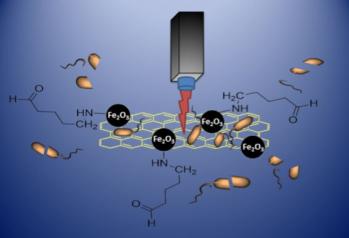Researchers from China's National Tsing Hua University found a new use for graphene: photothermal antibacterial therapy. The researchers say that during experiments both gram-positive Staphylococcus aureus and gram-negative Escherichia coli were efficiently captured by glutaraldehyde and concentrated (or immobilized) by the magnetic property of a magnetic reduced graphene oxide functionalized with glutaraldehyde.

The bacteria were rapidly killed by multiple means, including conventional oxidative stress as well as physical piercing and photothermal heating of graphene by near-infrared (NIR) laser irradiation.
The researchers say that their proposed antimicrobial treatment system is a binary treatment system that allows the targeted bacteria being separated and concentrated from the healthy biofluids/cells/tissues/organs first and subjected to focused killing thereafter, minimizing the adverse side effects.
Graphene can be harmful for bacteria. Back in September 2012 it was reported that graphene-based materials kill substantially more bacteria than graphite-based materials. Graphene Oxide was the most dangerous material. Graphene can also be used as a bacteria sensor.